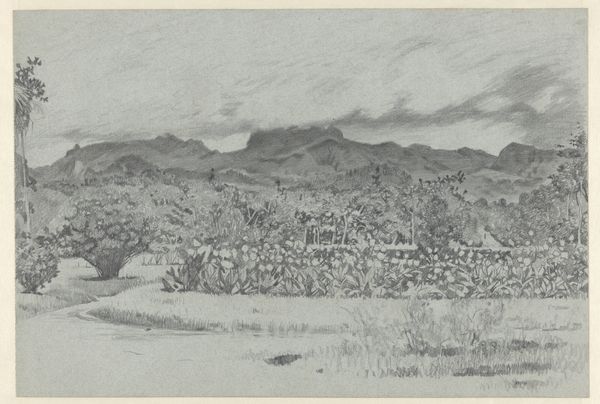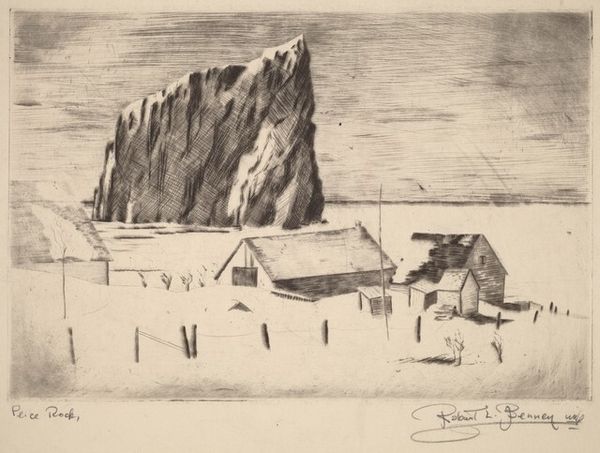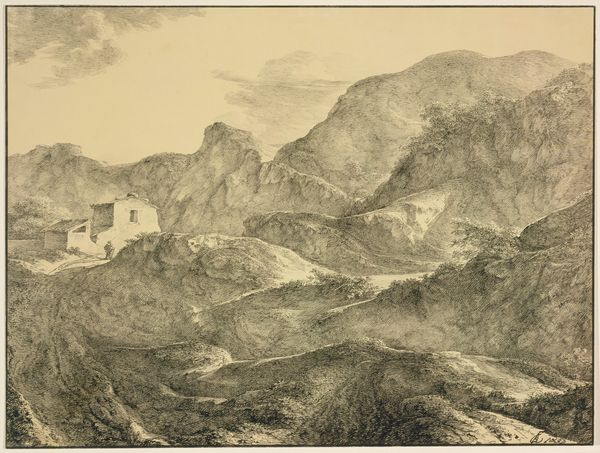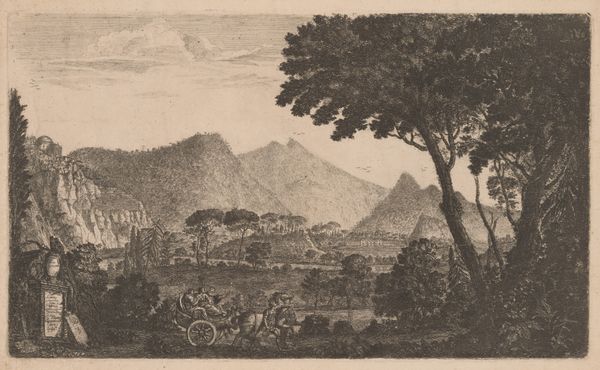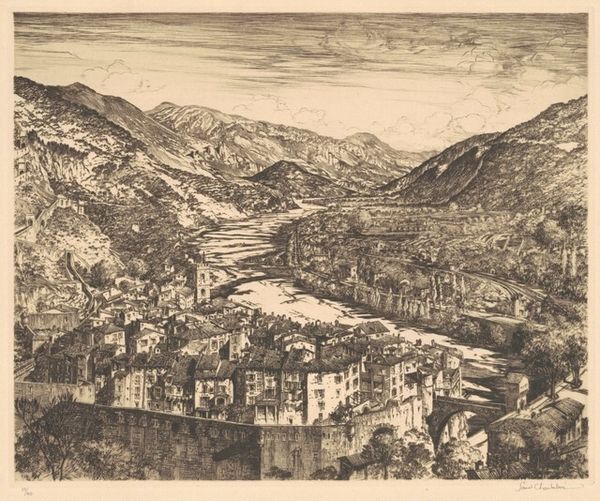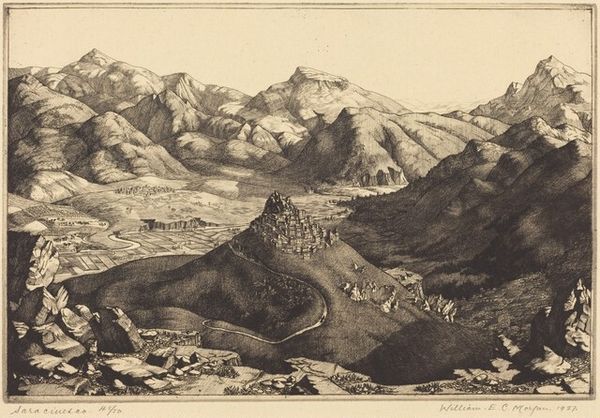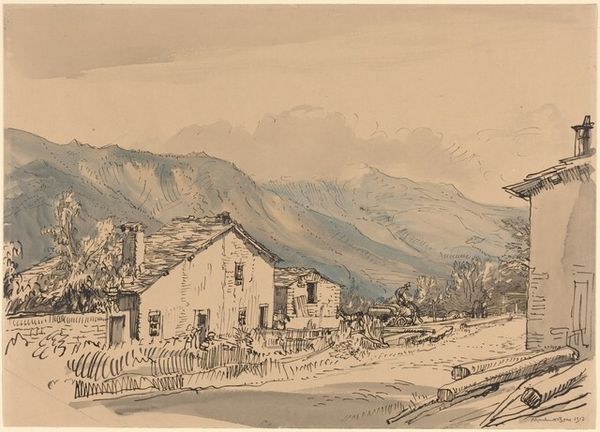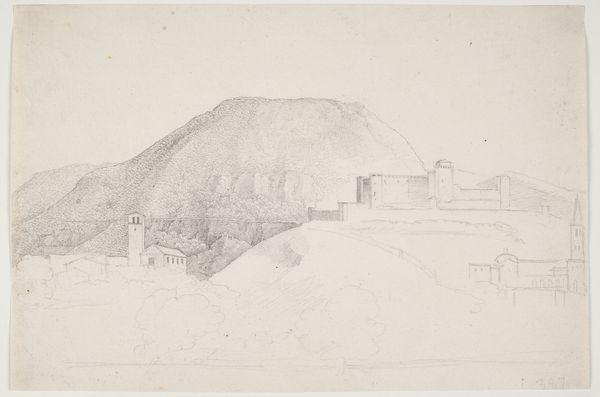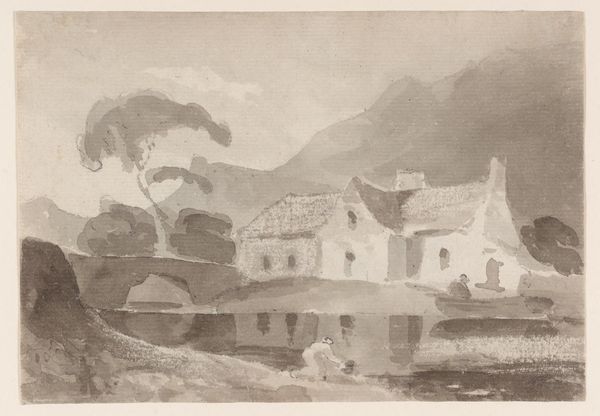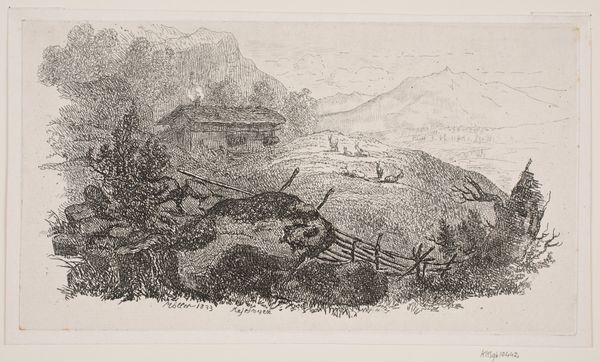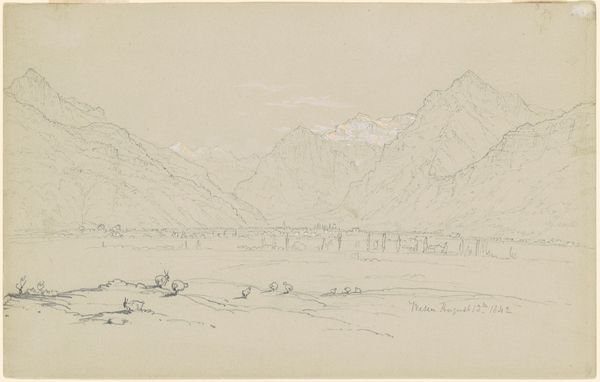
print, etching, photography
# print
#
etching
#
landscape
#
etching
#
photography
#
realism
Dimensions: plate: 16.83 × 23.5 cm (6 5/8 × 9 1/4 in.) sheet: 25.4 × 30.96 cm (10 × 12 3/16 in.)
Copyright: National Gallery of Art: CC0 1.0
Curator: What strikes me immediately is the tranquility, the silence almost, emanating from this landscape. It’s all in grayscale, an etching of the Sierra Madre, which, upon first look, creates a sense of stillness and a somber, if somewhat beautiful mood. Editor: Indeed. What you are sensing comes directly from Charles M. Capps’ deliberate composition, titled “Sierra Madre” and created in 1940. What the artist has created here is an etching. Curator: Right, and you know, that choice of medium impacts the image profoundly. The cross-hatching and varied line weights, which are features of etching, create an entire world of tone and texture that you wouldn't otherwise get, say, in a painting or sketch. It really accentuates that sense of timelessness too, for me anyway. Editor: I would venture further, postulating that etching, specifically, aligns well with the subject of the work itself. As a process with long historical roots, its effect aligns well with cultural continuity and historical reflection, here expressed through this specific landscape. The mountains especially serve as a grounding, unmoving reminder. What symbols jump out for you in this context? Curator: For me, the rough, seemingly unfinished fence strikes me most—it seems like a boundary between the natural world and the imposed human order. It contrasts beautifully with the organic shapes of the tree in the foreground. Those houses, seemingly randomly placed behind the barrier also strike a symbolic note... a desire to tame or domesticate. I don't know... what's your read? Editor: A great point about the fence line—its seemingly "makeshift" presentation is critical, pointing towards the ever-changing intersection between nature and culture in landscape. The role of etching adds depth too, pointing to socio-historical layering present on these sites across decades, centuries. Capps' choice in highlighting a region by presenting these dwellings becomes an observation on culture meeting geographical space, perhaps on expansion. Curator: Interesting idea about expansion, certainly as this work appeared just prior to World War II. Well, on that note, the light itself, emanating from a single direction across the frame, hints to something bigger than we see at first glance—as if what is outside the image also carries an outsized historical, psychological weight... a perfect choice of etching to allow us to go "beneath" the initial read, indeed! Editor: I agree. And ultimately, that potential for cultural reflection makes Capps' piece far more than just another landscape print!
Comments
No comments
Be the first to comment and join the conversation on the ultimate creative platform.
